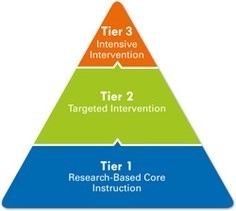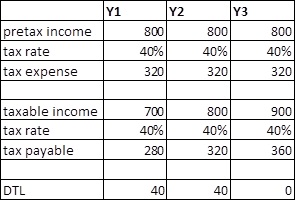What Is a Cost-Benefit Analysis?

In this context, CBA is simplified and the total expenses are mainly based on the price of the process energy requirement and on the average cost of transport. The benefit of the recovery centres comes from the sale of recycled materials to the manufactures as raw materials and the savings of energy, i.e. “avoided energy”, which is released from the production process. One key issue with the simple calculation though is the concept of time and the impact it can have on value. This is the concept that money you have now is worth more than the identical sum in the future due to its potential earning capacity. In other words, the sooner you put a dollar in the bank, the sooner it starts earning interest.
Creating a cost-benefit analysis can seem like a project in its own right, especially if you’re working with multiple stakeholders to get the job done. Before you dive in, consider using a project management tool to coordinate work. Asana lets you create and assign tasks, organize work, and communicate with stakeholders directly where work happens.
1 Cost-Benefit Analysis Approach
A cost-benefit analysis (CBA) is a decision-making process that allows a business to compare the forecasted costs and benefits of a possible project and is usually expressed in monetary terms. If the benefits of investing in the project are greater than the costs, then the business will want to invest since it will be a value-maximizing opportunity. This entails that the CBA takes into account benefits and costs that are not considered by the market.
- A cost-benefit analysis is a process that helps you determine the economic benefit of a decision, so you can decide whether it’s worth pursuing.
- Before you can present the proposal to the vice president, you need some facts to support your suggestion.
- In these cases, the analysis can help decision-makers optimize the benefit-cost ratio of their projects.
- Firstly, even if cost-benefit analysis were merely a technical approach, interpretations of what this approach amounts to — even by most proponents of the approach — would often suppose a kind of value monism.
- The cost includes purchasing the software, training staff, and potential downtime during the transition.
- The choice of discount rate may have a major impact on the outcome of the analysis.
Such an analysis can help businesses decided whether they want to take on a specific project, choose between multiple mutually exclusive projects or even determine the optimal scale of a specific project. A cost-benefit analysis is a simple way to determine whether the gains from a business decision you’re considering outweigh the costs to implement it. The CBA is a tool for public decision-making that assesses in terms of social well-being the opportunity and efficiency of different types of investment projects. Consequently, in the CBA, compared to the financial analysis, the social well-being is the reference goal that guides the analysis. This allows determining whether an activity can promote economic profits or which solutions generate the most profit. This method is applied in this preliminary study to analyse the differences of economic benefits among the pathways of EoL composites.
What Is the Rate of Return?
If the latter is chosen, cost-benefit analysis is related to the ethical theory of utilitarianism. With Bentham’s classical variant of utilitarianism, for example, the assumption is that all relevant moral values can eventually be expressed in terms of the moral value of human happiness. One issue is that it is often difficult to indicate to what extent values like safety, health, sustainability, and aesthetics contribute to the value of human happiness, and to furthermore express this in monetary terms.
Consider Discount Rates
When evaluating your findings, it’s important to take discount rates into consideration when determining project feasibility. Another concern with cost-benefit analysis is the time required to conduct it. Because of the relatively high cost, it rarely makes sense to employ a cost-benefit analysis when reviewing the options related to relatively small expenditures. In these cases, managers typically rely on their experience to make a decision, rather than a hard quantitative analysis. Examples of decisions to which cost-benefit analysis can be applied are noted below. We address whether to acquire a fixed asset, whether to hire staff to design a new product, whether to hire staff to reduce product failures, and whether to remediate groundwater pollution.

For complex investments, such as those involving sophisticated technical equipment, infrastructures, high level of uncertainty, and variability of data, different approaches may be applied. Cost/benefit analysis of the type for assessment of natural systems is not merely concerned with the Cost benefit analysis effects on environmental quality, but rather, it seeks the conditions for sustainable use of the natural resources in a region. This type of approach is not useful for small-scale development projects, but is better suited for the analysis and evaluation of a regional development plan.
Cost-Benefit Analysis of Safety Measures
Cost-benefit analyses can seem daunting at first, but don’t fret—we’ve simplified the process into five concrete steps. For example, ProjectManager has a sheet view, which is exactly like a Gantt but without a visual timeline. You can switch back and forth from the Gantt to the sheet view when you want to just look at your costs in a spreadsheet. You can add as many columns as you like and filter the sheet to capture only the relevant data. Keeping track of your costs and benefits is what makes a successful project.
- This helps you estimate the full economic benefit (or lack thereof) of your choice so you can decide if it’s a good idea to pursue.
- Similarly, decide what metric you’ll be using to measure and compare the benefits and costs.
- Numbers can be automatically exported to Excel or provided in the form of a report to key decision-makers.
- A CBA can help you determine, among other things, the financial viability of a project if you need to hire additional staff, and how you want to prioritize investments so you can make an informed decision.
- Cost-benefit analysis (CBA) involves the use of microeconomics to formally assess the costs and benefits of different projects or investments.
A cost-benefit analysis is an economic evaluation in which all costs and consequences of a certain decision are expressed in the same units, usually money [2,2a]. Such an analysis may be employed in relation to operational safety, to aid normative decisions about safety investments. One should keep in mind that it cannot be demonstrated whether one safety investment is intrinsically better than another. Nevertheless, a cost-benefit analysis allows decision-makers to improve their decisions by adding appropriate information on costs and benefits to certain investment decisions regarding prevention or mitigation.
Factoring in opportunity costs allows project managers to weigh the benefits from alternative courses of action and not merely the current path or choice being considered in the cost-benefit analysis. By considering all options and the potential missed opportunities, the cost-benefit analysis is more thorough and allows for better decision-making. Another concern is that small changes in the accuracy of the data used might have a substantial effect on the decision outcome. This is especially the case when the measured cost and benefit net to a value close to zero.
Review Historical Data
If total benefits outnumber total costs, then there is a business case for you to proceed with the project or decision. If total costs outnumber total benefits, then you may want to reconsider the proposal. Direct costs and benefits will be the easiest to assign a dollar amount to. Indirect and intangible costs and benefits, on the other hand, can be challenging to quantify.
Private fund industry prepares for battle over sweeping US rules – Financial Times
Private fund industry prepares for battle over sweeping US rules.
Posted: Mon, 21 Aug 2023 04:00:48 GMT [source]
Cost-benefit analysis isn’t the only type of economic analysis you can do to assess your business’s economic state, but a single option at your disposal. There are many positive reasons a business or organization might choose to leverage cost-benefit analysis as a part of their decision-making process. There are also several potential disadvantages and limitations that should be considered before relying entirely on a cost-benefit analysis.
Purpose of a Cost-Benefit Analysis
For example, you could measure customer satisfaction by tracking customer churn rate (the rate at which customers stop using your service). If you can, use the same KPIs for both costs and benefits so you can easily compare them later. Other related techniques include cost–utility analysis, risk–benefit analysis, economic impact analysis, fiscal impact analysis, and social return on investment (SROI) analysis.
Cost benefit analysis or CBA is a process or tool to support decision making in projects. CBA evaluates the cost versus the benefit of a project to determine project feasibility (how much the benefit outweighs the cost) as well as provide a decision making metric when weighing up multiple options. If you don’t want to include more complex calculations like net present value, benefit-cost ratio, discount rates, and sensitivity analysis, you don’t have to. To keep things simple, you can just calculate your net cost-benefit and leave it at that. The process has been refined since Dupuit’s day, and now it’s used less for calculating bridge tolls and more for figuring out if decisions are economically feasible.
h International Symposium on Process Systems Engineering and 25th European Symposium on Computer Aided Process Engineering
For smaller or less complex decisions, try using a simpler process like a decision matrix. However, large projects that go on for a long time can be problematic in terms of CBA. There are outside factors, such as inflation, interest rates, etc., that impact the accuracy of the analysis. In those cases, calculating the net present value, time value of money, discount rates and other metrics can be complicated for most project managers. Cost-benefit analysis is a technique that helps decision-makers choose the best investment opportunities in different scenarios.
WATCH New luxury pet resort opens on Airport Road – Hot Springs Sentinel
WATCH New luxury pet resort opens on Airport Road.
Posted: Mon, 21 Aug 2023 09:13:59 GMT [source]
A cost-benefit analysis adds up the benefits and costs of a program or purchase, extracts a CBA ratio and then compares that result with both stasis and alternative programs or purchases. When listing out tangible costs (like direct and indirect costs), follow the same process you would when creating a project budget. Think of all the tasks you need to complete to follow through on your decision, then list out the resources required for each deliverable. If you’re stuck, try looking at similar projects that have been completed in the past to see what type of impact they had. The cost-benefit ratio, or benefit-cost ratio, is the mathematical relation between the costs and financial benefits of a project. The cost-benefit ratio compares the present value of the estimated costs and benefits of a project or investment.

Cost-benefit analysis is a general method that is often used in engineering. What is typical of cost-benefit analysis is that all considerations that are relevant for the choice between different options are eventually expressed in one common unit, usually a monetary unit, like dollars or euros. Complex decisions of a project can be made simpler by cost-benefit analysis. CBA evaluates the cost versus the benefit of a project to determine project feasibility as well as provide a decision making metric when weighing up multiple options. A cost-benefit analysis, often paired with the sensitivity or “what if” analyses used in financial modeling, also offsets biases that may sway decisions, like the dreaded HiPPO — highest-paid person’s opinion. Then there’s the fact that while a project or purchase with a high benefit-to-cost ratio is generally considered the most favorable option, that’s not a given.
